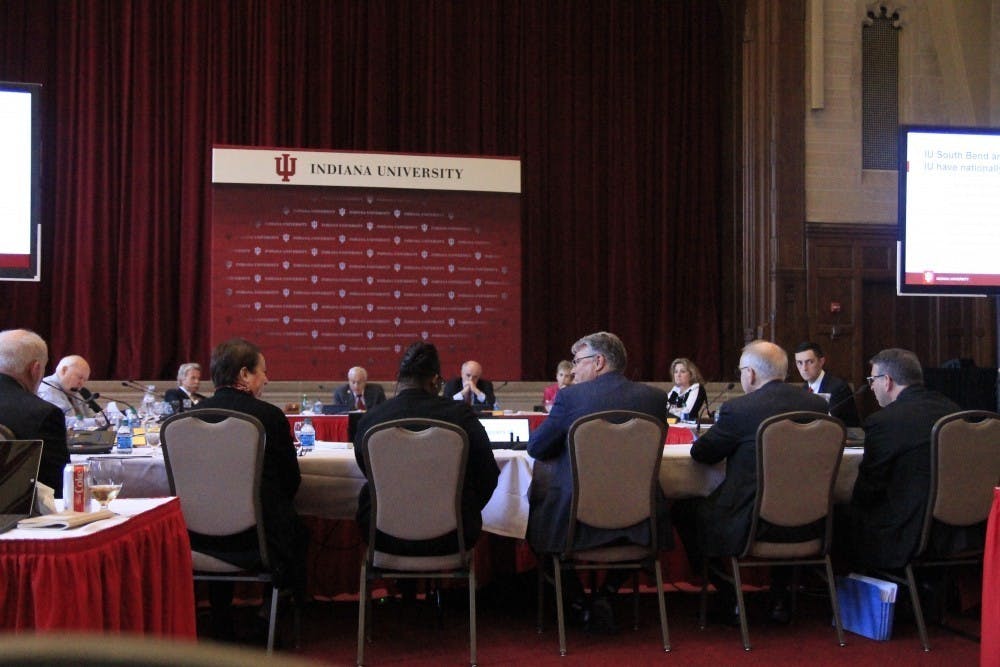During your time at IU, do you feel as though you’ve had exposure to different cultures and experienced a wealth of diversity? If you answered yes, and you’re white, you’d be surprised at the diversity — or rather, the lack of diversity — present on campus.
Despite being one of Indiana’s most prestigious universities, IU has a diversity issue. From its students to the Board of Trustees, the university remains overwhelmingly white. In order to become a true “college for all,” IU must make structural, not superficial changes. Racism is a multifaceted issue and only a multifaceted approach can solve it.
To combat this issue, IU must hire more faculty of color and provide expansive pathways to full professorship. Faculty of color shouldn’t be considered for diversity positions only — they should be uplifted into all leadership positions.
When examining Bloomington’s campus, the lack of representation is overt. People of color only comprise 23.6% of students as of 2020, and 31% of tenure or tenure-track faculty as of 2019. While people who are Black are about 10% of Indiana’s population, they represent less than 6% of IU Bloomington students.
While representation of Black, Indigenous and people of color in higher education is generally minimal, IU still underperforms. Among its peer institutions in the Big Ten, IU ranks 11th out of 14 for minority undergraduate enrollment.
“We want to provide opportunities to everyone in our state and beyond, regardless of background,” IU spokesperson Chuck Carney said.
He also cited scholarship programs specifically for underrepresented communities, such as 21st Century Scholars and Hudson and Holland, and emphasized IU’s longstanding commitment to diversity. IU seems to be working toward inclusivity on campus but it begs the question: Is it enough?
There are countless barriers to people of color reaching college, including disparities caused by systemic racism in K-12 funding and the school-to-prison pipeline. Increasing BIPOC representation is not merely a remedial matter. Increases in diversity are beneficial to the entire university, students and faculty alike.
The Office of Diversity, Equity, and Multicultural Affairs boasts a 71% increase in tenure or tenure-track faculty on Bloomington’s campus from 2005 to 2019. Yet the figure is deceiving on the surface, as the number of BIPOC faculty increased by only 135 people. Even still, Asian faculty represents more than half of the increase in diversity, while the number of Black professors increased by just 10 over the last 14 years.
IU must uplift all faculty members of color.
Of course, students of color do not want to attend a university where their professors and administrators don’t look like them. The lack of representation can mean an unwelcoming environment full of microaggressions or even more severe disciplinary outcomes.
IU history professor Amrita Chakrabarti Myers said she advocates for a top-down approach, specifically uplifting women and people of color to tenure-track professorships and administration leadership.
“If we want to actually increase the number of students of color who come here and who stay here, who will actually matriculate all the way through and graduate and who are successful, then you have to start from the top,” Myers said. “You have to actually hire me, and you have to make this a hospitable climate.”
Significant obstacles don’t suddenly fade away once people of color reach graduate programs.
Myers said she faced an intense financial burden when obtaining her Ph.D. The vast majority of students of color, 80-90%, are likely to take on debt, compared to the 60-70% their white counterparts face. The racial disparities in debt can be attributed to barriers such as the lack of generational wealth and the high percentage of first generation students among Black and Brown families.
It is crucial that IU prioritizes long-term, structural solutions to the issues of racism on its campus. Dismantling racist structures should be a moral imperative, even when those structures are an institution’s own.
“At the end of the day, I want to see us as an institution become better in all respects and at all levels,” Myers said.
Alessia Modjarrad (she/her) is a junior studying Economic Consulting and Law and Public Policy. She is the president of the College Democrats of Indiana and works as a political operative on various Democratic campaigns.






